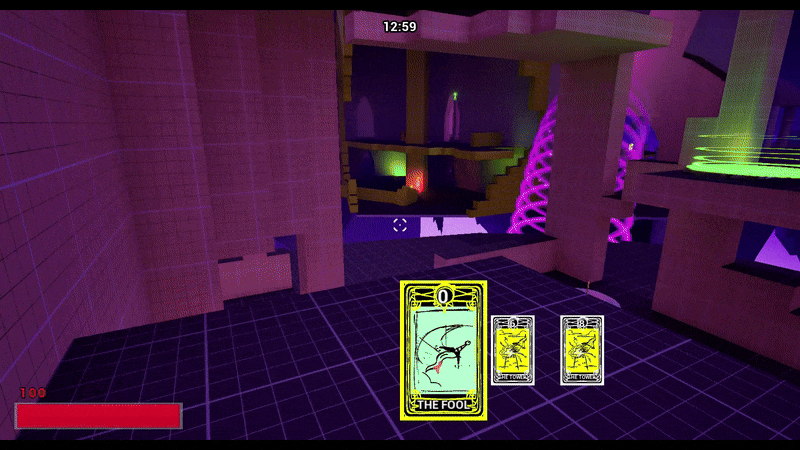Apotheosis
Type of Project: Academic Multidisciplinary Team | Size: 9 members | Role: Level Designer | Duration: 8 weeks | Year Created: Early 2025 | Software: Unreal Engine 5.4.4
Overview
Arena Shooter Map Design
Designed an 8-player FFA multiplayer map for Eidolon: Fate of Fools, a networked mystical arena shooter with a card game twist.
Applied architectural and PvP map design principles to create a balanced and competitive space.
Structured level geometry to promote skill expression through gunplay and movement mechanics.
Work Summary
Leveraged custom telemetry and heat mapping tools to refine level geometry based on player data.
Worked closely with gameplay programmers to ensure seamless level design and mechanics integration.
Enhanced immersion with ambient storytelling through landmarks, buildings, and lighting.
Adhered to the game pillar, “It’s Fast to Flow,” by designing lanes and loops for fluid and dynamic movement abilities.
Planning & Research
I played Unreal Tournament 4 maps to understand the general layouts of a movement-heavy arena shooter like our game.
Played several matches with bots and players in the team’s previously made maps to understand game mechanics before starting the planning process.
Developed a top-down layout based on research findings.
Pitched level concept and plans to the team for approval and feedback.
Eidolon: Fate of Fools, Build Version 5.5, Firing Range
Project Pitch and Planning Documents
Initial Top-Down Layouts
Top Down Layout First Floor
Top Down Layout First Floor w/Second
Integrating Environmental Aesthetics with Competitive Design
Designed distinct areas using color schemes and landmarks to guide players and enhance level flow.
Researched Gothic cathedral floor plans to adapt architectural features that support fast-paced arena shooter gameplay.
Incorporated ruined structures to create realistic layouts, utilizing broken ceilings and walls for strategic rotation opportunities.
Used photo references to create custom props in UE5 modeling tools, ensuring the appropriate thematic aesthetic.
Leveraged preexisting assets to reinforce ambient storytelling through environmental design.
Encouraging & Rewarding Player Skill Expression
Designed alternate routes to accommodate movement abilities like rocket jumping, aerial launches, and dashing, enabling skillful navigation.
Balanced high-ground advantage by preventing player spawns on rooftops, ensuring vertical positions are temporary.
Enforced movement flow by limiting weapon ammo, requiring players to return to ground level for resupply.
Strategically placed weapon spawners with movement-enhancing abilities to encourage dynamic and expressive gameplay.
Player utilizing the flying buttresses and rocket jump to rotate across the map.
Player utilizing highground to use a sniper then rotate to a roof with a rocket jump to go into a slam.
Player utilizing rocket jump to scale floating tombstones to rotate in through the ceiling.
Ending Notes
Learning Outcomes
I had a lot of fun with this project and working with my team members on this project. Using UE5 modeling tools, a custom level telemetry visualizer, and team-made tools to support the custom bots, I learned a lot about Unreal Engine’s tools and how they can aid in making more complex level geometry.
Additionally, playing my map on a custom network built by my team with friends out of state was an amazing experience. This project helped me understand networking, replication, and how games must be built when hosting multiple players online.
The team gave me an opportunity to prepare and pitch a level to a team of non-designers which I had not had the chance to do before. It helped my ability to communicate my ideas and sell others on my designs.
Complications/Issues
Our team had to complete levels rapidly and while maintaining quality. The art team’s ripple effect (which would affect geometry) feature required an early geometry lock, preventing any mesh edits. To ensure the maps were polished before lockdown, we conducted two external and four internal playtests, making final adjustments by adding, removing, or repositioning objects.
These constraints pushed us to make quick, informed decisions, refining our designs efficiently to deliver the best possible player experience within strict limitations.








